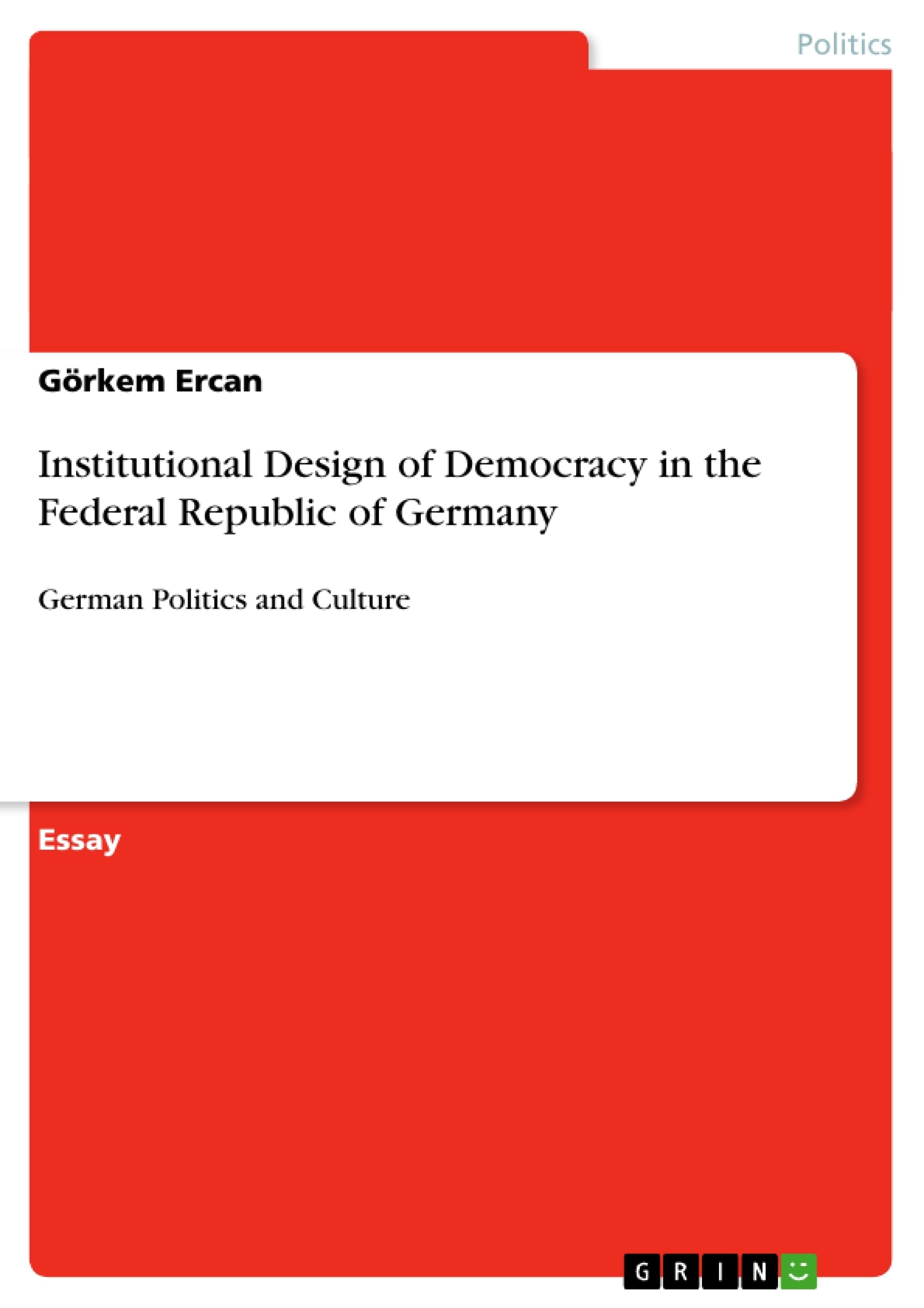In 1949, the Basic Law was written in Germany in order to keep certain aspects according to certain rules. This literature review examines certain historical events and defines which instruments exist in the Basic Law to prevent those historical events from happening again. Furthermore, it includes constitutional norms, which then are applied to Lijphart’s (1999) question of whether the Consensus Model of Democracy or the Westminster Model of Democracy is better. The paper then discusses pros and cons of the mentioned models that are mentioned and concludes with a decision towards one of the two.
Inhaltsverzeichnis (Table of Contents)
- Abstract
- Introduction
- The Basic Law
- The Consensus Model of Democracy
- The Westminster Model of Democracy
- Pros and Cons of the Consensus Model
- Conclusion
- References
Zielsetzung und Themenschwerpunkte (Objectives and Key Themes)
This paper aims to examine the institutional design of democracy in the Federal Republic of Germany by analyzing the Basic Law and its historical context. It explores the relationship between the Basic Law's provisions and the prevention of historical events such as the failure of the Weimar Republic and the Holocaust. Furthermore, it compares the Consensus Model of Democracy with the Westminster Model, examining their suitability for Germany.
- The historical context of the Basic Law and its relationship to the Weimar Republic
- The role of the Basic Law in protecting human rights and preventing historical injustices
- The characteristics of the Consensus and Westminster Models of Democracy
- The strengths and weaknesses of each model in relation to Germany's political system
- The author's conclusions regarding the ideal model of democracy for Germany
Zusammenfassung der Kapitel (Chapter Summaries)
The paper begins with a discussion of the historical context surrounding the creation of the Basic Law in 1949. It analyzes the failures of the Weimar Republic and the reasons for the adoption of a new constitutional framework. The paper then delves into the key provisions of the Basic Law, emphasizing its focus on human rights and the prevention of historical atrocities. Subsequently, it introduces Lijphart's typology of democracy, outlining the characteristics of the Consensus and Westminster Models.
Further, the paper explores the strengths and weaknesses of each model, highlighting their differences in terms of executive power, electoral systems, and government structure. The author examines the suitability of the Consensus Model for Germany, considering its potential to represent the diverse opinions of the German population and avoid the pitfalls of a majoritarian system. Finally, the paper concludes with a discussion of the challenges posed by a multi-party system and the author's perspective on the most effective model of democracy for Germany.
Schlüsselwörter (Keywords)
The key terms and focus topics of this text include: German democracy, Basic Law, Weimar Republic, Holocaust, human rights, consensus model, Westminster model, multi-party system, proportional representation, effective participation, voting equality, control of the agenda.
- Quote paper
- Görkem Ercan (Author), 2011, Institutional Design of Democracy in the Federal Republic of Germany, Munich, GRIN Verlag, https://www.grin.com/document/229467




